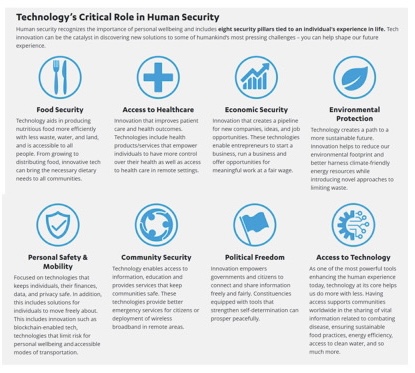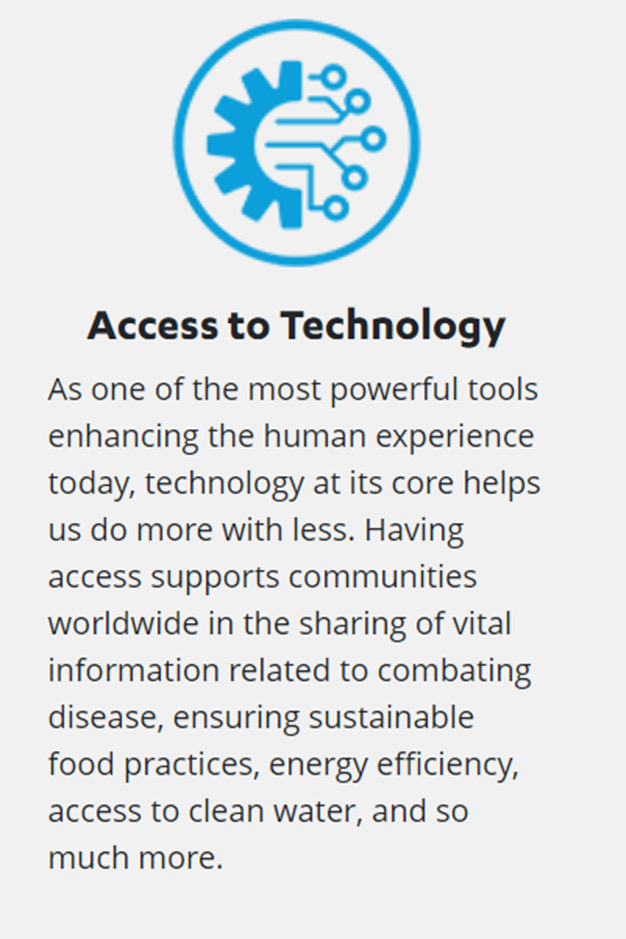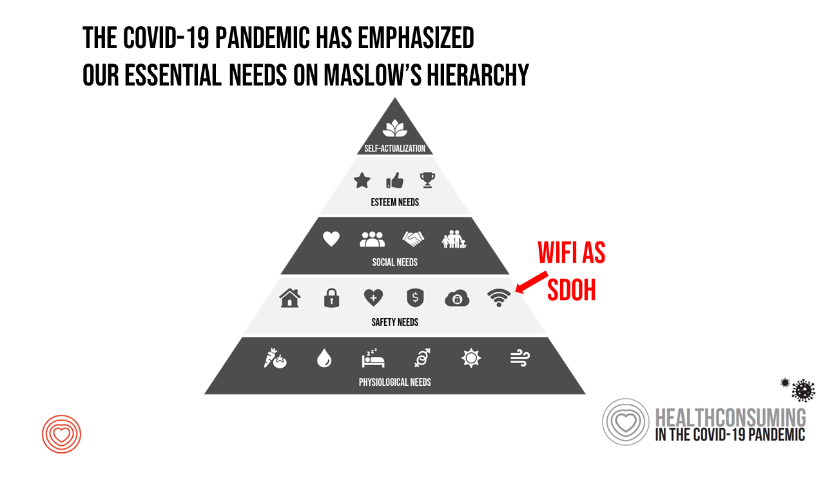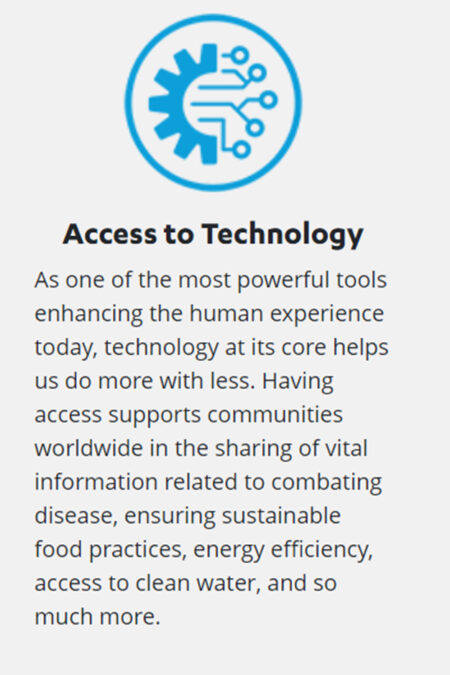In kicking off #CES2024, CTA’s researchers noted the acceleration of global connectivity, with gaps in peoples’ ability to connect depending where they live: by region, the percent of people connected to the internet today are, according to CTA’s data,
- 92% in the U.S.
- 87% in the E.U.
- 76% in Latin America
- 73% in China
- 55% in Nigeria
- 46% in India.
Such gaps in connectivity threaten peoples’ individual well-being, but also social and political stability that impacts the entire world’s security.
And not to overlook, as well, the promise of AI to do good at scale at the enterprise-level, globally.

Recognizing the importance of connectivity and the over-arching need for peoples’ access to technology overall, CES is collaborating with the United Nations Trust Fund for Human Security (U.N.) and the World Academy of Art and Science (WAAS), on a program to safeguard Human Security For All — HS4A.
Last year, I wrote about this program’s seven pillars for human security in the context of industry announcements from John Deere (related to food security), L’Oreal (for personal safety and mobility), and MedWand (for access to healthcare). In addition to these three factors, the additional four related to economic security, environmental protection, community security, and political freedom, shown in the first graphic.

Enter pillar #8: Access to Technology.
As the text beneath this eighth pillar explains, “As one of the most powerful tools enhancing the human experience today, technology at its core helps us do more with less. Having access supports communities worldwide in the sharing of vital information related to combating disease, ensuring sustainable food practices, energy efficiency, access to clean water, and so much more.”
Some of the exhibitors collaborating in the HS4A showcase include Abbott, AARP, Bosch, Nasdaq, and Siemens. Couple this with the sustainability companies working on accessibility, energy, food-tech, smart cities, and clean water, and we find CES convening a meeting that is working hard to walk the talk about “inclusion.”

Health Populi’s Hot Points: From the start of the coronavirus pandemic in early 2020, one thing became clear: that people living in households without connectivity were unable to work from home if they had a job that supported virtual work, attend school from home, or connect to loved ones, friends, and communities from home.
In 2017, a few years before we uttered “Covid” or “PPE,” I wrote about broadband connectivity as a social determinant of health in the Huffington Post.
The pandemic made it all the more obvious to most people. In the first six months of the pandemic, I collected all kinds of data about how consumers’ behaviors were adapting to the repurposing of homes for living, working, educating, praying, cooking and baking (sourdough breads posted on Pinterest), exercising, and socializing….all, through videoconferencing sites like Zoom and Microsoft Teams, and FaceTime and WhatsApp on smartphones.
I added Wi-Fi as a basic human need on Maslow’s Hierarchy, included in my book Health Citizenship, with digital connectivity and privacy rights a pillar of being a full-on health citizen.
I quote from the (Bertrand) Russell-(Albert) Einstein Manifesto from July 1955 — two of the founders of the World Academy of Art and Science, “We appeal as human beings, to human beings: Remember your humanity, and forget the rest.”
For more on HS4A, download the new 2024 Technology as a Force for Good paper here.
Onward…





 I'm in amazing company here with other #digitalhealth innovators, thinkers and doers. Thank you to Cristian Cortez Fernandez and Zallud for this recognition; I'm grateful.
I'm in amazing company here with other #digitalhealth innovators, thinkers and doers. Thank you to Cristian Cortez Fernandez and Zallud for this recognition; I'm grateful. Jane was named as a member of the AHIP 2024 Advisory Board, joining some valued colleagues to prepare for the challenges and opportunities facing health plans, systems, and other industry stakeholders.
Jane was named as a member of the AHIP 2024 Advisory Board, joining some valued colleagues to prepare for the challenges and opportunities facing health plans, systems, and other industry stakeholders.  Join Jane at AHIP's annual meeting in Las Vegas: I'll be speaking, moderating a panel, and providing thought leadership on health consumers and bolstering equity, empowerment, and self-care.
Join Jane at AHIP's annual meeting in Las Vegas: I'll be speaking, moderating a panel, and providing thought leadership on health consumers and bolstering equity, empowerment, and self-care.